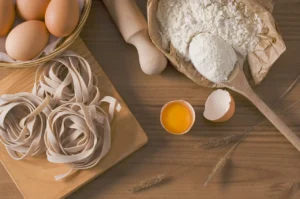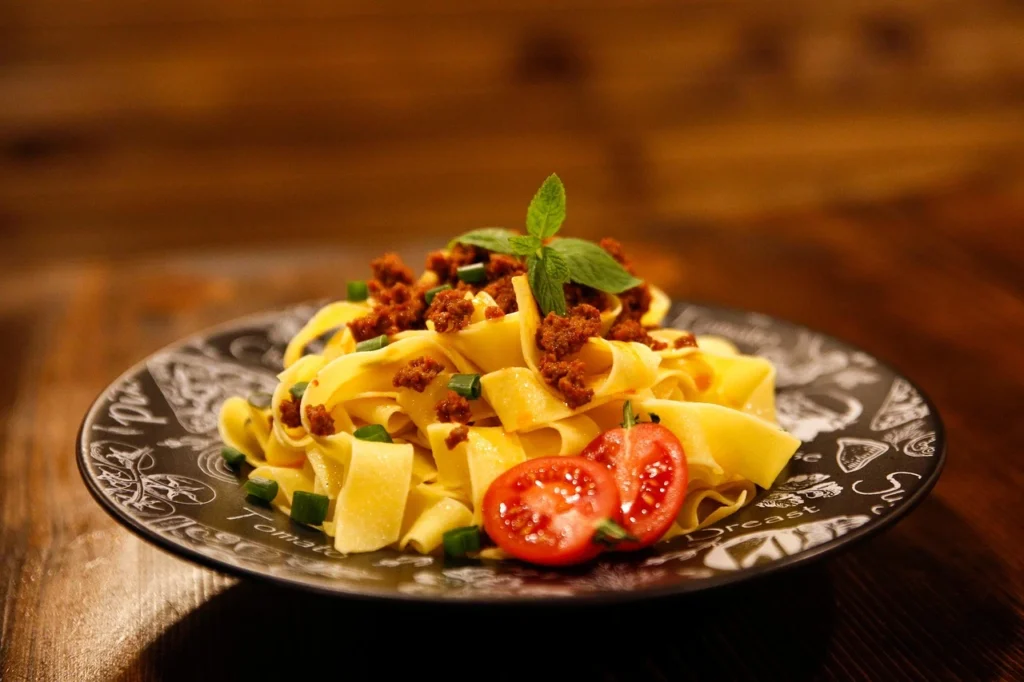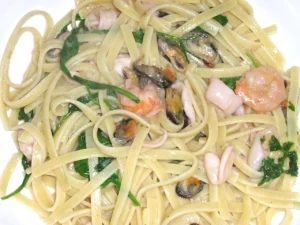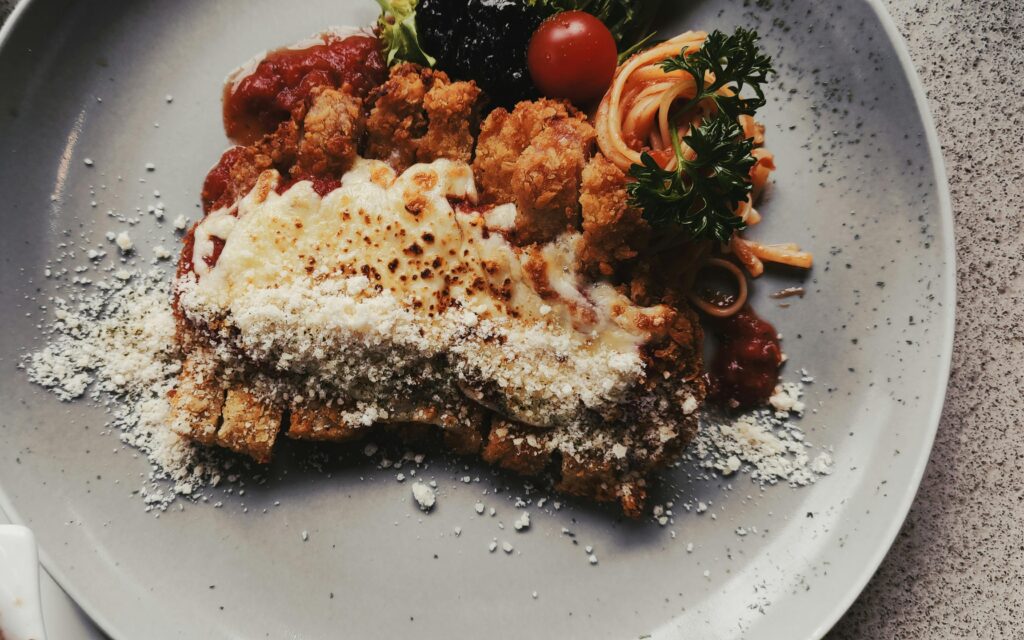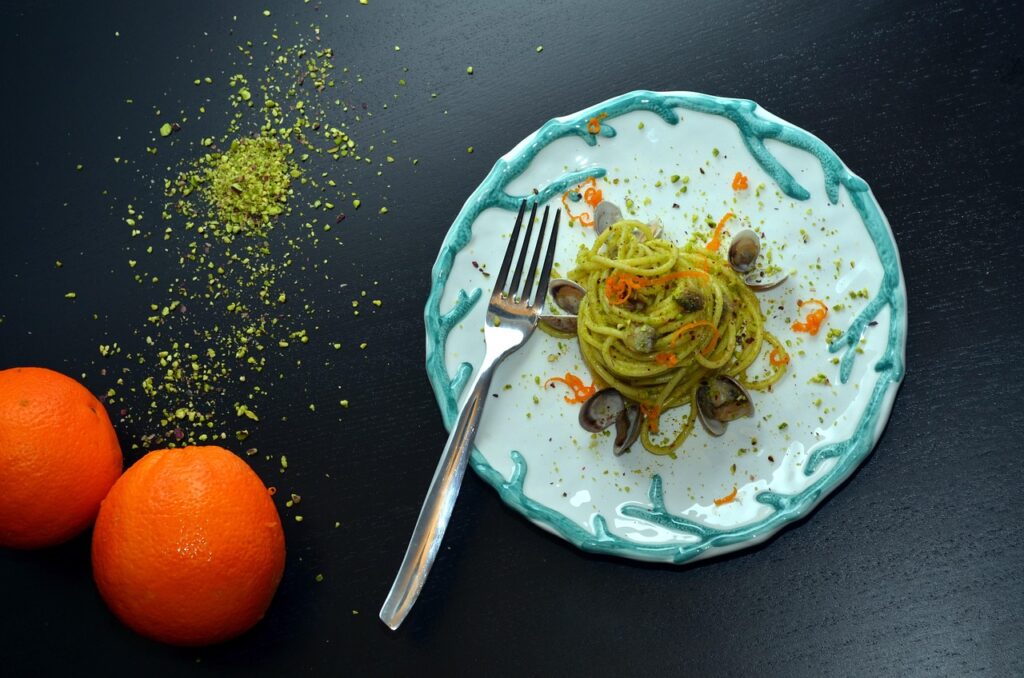Fettuccine Mastery: 10 Stunning Ways to Elevate Every Dish
Fettuccine has depth beyond Alfredo. Discover its origin, best pairings, cooking tips, recipes, and more. This definitive guide elevates your pasta game.
Permalink: https://pastaloverz.com/guide/fettuccine-mastery
Table of Contents
Introduction
What Is Fettuccine?
History and Origins
How to Cook Fettuccine Well
Sauce Pairings and Recipes
Tips, Variations, and Substitutions
Serving, Storage, and Leftovers
Best Side Dishes and Complements
Common Mistakes and Troubleshooting
FAQ
Conclusion and Call to Action

Introduction
Fettuccine is one of the most beloved pasta types globally. Fettuccine translates to “little ribbons” in Italian, and the name perfectly describes its shape: long, flat strands that hold on to sauce like a dream.
People often associate Fettuccine Alfredo, but that’s only a small part of its story. This pasta has a rich history, regional variations, and numerous ways to transform everyday meals into something special.
What Is Fettuccine?
It is a ribbon-style pasta, wider than linguine but slightly narrower than tagliatelle. Traditionally, it’s made with simple ingredients: semolina flour and eggs. The flat surface makes it versatile and perfect for thick, creamy, or meaty sauces.
Fresh vs. dried
It is a delicate bite, cooks in 2–3 minutes, and is often used in northern Italian recipes.
Dried Fettuccine, a sturdy pasta available worldwide, is excellent for a longer shelf life.
Fettuccine vs. tagliatelle
The two are close cousins. Fettuccine is slightly narrower and is often associated with Roman cuisine, while tagliatelle is closely tied to Bologna and the Emilia-Romagna region. For most home cooks, the two can be used interchangeably.
(See also: Tagliatelle Guide)
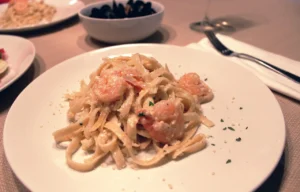
History and Origins
It dates back to Roman times, when flat egg pasta was a staple at feasts. Its most famous moment came in the early 20th Century when restaurateur Alfredo di Lelio served “Fettuccine al burro” (butter Fettuccine) to his wife. American actors Douglas Fairbanks and Mary Pickford fell in love with it so much during their honeymoon in Rome that they brought the recipe back to Hollywood.
This dish evolved into Fettuccine Alfredo, which in the United States typically includes cream, whereas in Italy, it remains a simple mix of butter and Parmigiano Reggiano.
For more information, see Italia Regina’s history of Fettuccine to Cook Well.
Perfect Fettuccine is all about timing and technique.
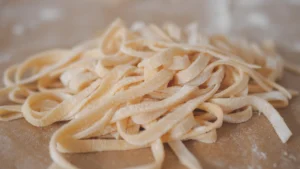
1. The water and salt rule
Use at least 4 to 5 quarts of water per pound of pasta. Salt it generously — about one tablespoon per 4 cups — so the pasta tastes seasoned.
2. Al dente texture
Cook fresh for 2–3 minutes and dry for 8–10 minutes. Always taste a strand before draining. Al dente means firm to the bite, not raw.
3. Finish in the sauce
Drain the pasta a minute early, then add it to the pan with your sauce. Toss over medium heat, adding reserved pasta water as needed. This helps sauce cling and creates a silky coating.
4. Portioning
One pound of Fettuccine serves four people as a main course or six as a first course.
Watch https://www.youtube.com/watch?v=-dbC0813cFo
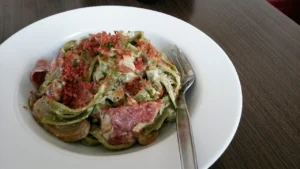
Sauce Pairings and Recipes
The magic of it is how it welcomes bold flavors.
Classic combinations
Alfredo: Butter, cream (in U.S. style), and Parmigiano.
Alla Bolognese: Rich ragù clings to the ribbons.
Al burro: The authentic Roman origin with just butter and cheese.
Creative pairings
Seafood Fettuccine: Toss with shrimp, garlic, and lemon for a delicious dish.
Vegetable primavera: Use seasonal vegetables and a light olive oil base.
Truffle Fettuccine: Add shaved truffles or truffle oil to butter and Parmigiano.
Quick weeknight idea
Sauté mushrooms in olive oil, then add garlic and thyme; toss with cooked Fettuccine. Finish with a splash of cream and Pecorino Romano. Dinner in 20 minutes.
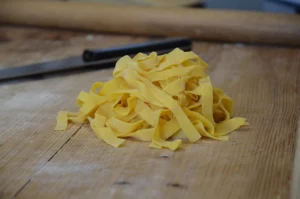
Tips, Variations, and Substitutions
It isn’t limited to plain egg dough.
Spinach: Naturally green and earthy, it pairs perfectly with creamy sauces.
Squid ink: Jet-black strands, perfect for pairing with seafood.
Whole wheat or gluten-free, nutty, and accessible to more diets.
Substitutions
Suppose you’re out of Fettuccine tagliatelle or pappardelle. Both are ribbon-style pastas that behave similarly in sauces.
(See also: Pappardelle Guide)
Watch https://www.youtube.com/watch?v=QseL6X6FjvM
Serving, Storage, and Leftovers
Serving suggestions
Plate Fettuccine twirled into nests for an elegant look. Garnish with parsley, fresh ground pepper, or shaved cheese.
Storage
Dry pasta: store in a cool pantry up to 2 years.
Fresh pasta: refrigerate for 2–3 days or freeze for up to 2 months.
Leftovers
Toss the cooked pasta with a bit of olive oil before refrigerating—reheat by tossing it in a hot pan with extra sauce or broth. Avoid microwaving plain noodles, as they tend to dry out.
Watch https://www.youtube.com/watch?v=LPPcNPdq_j4
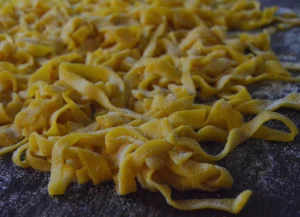
Best Side Dishes and Complementary meals shine when paired with balance:
Salads: crisp Caesar or arugula salad with lemon.
Greens: sautéed spinach, broccoli rabe, or roasted asparagus.
Proteins: grilled chicken, steak strips, or seafood.
Bread: simple garlic bread or ciabatta to soak up the sauce.
Avoid pairing with overly heavy sides — the pasta itself is already rich.
Visit https://pastaloverz.com/linguine-pasta-guide
Common Mistakes and Troubleshooting
1. Overcooking
Soft, mushy pasta loses its appeal. Always taste before draining.
2. Undersalting the water
Pasta should be seasoned from within. Don’t skip the salt.
3. Sauce separation
If cream or cheese breaks, add a splash of starchy pasta water and whisk quickly.
4. Serving too dry
Reserve at least half a cup of pasta water. It’s the secret to silky sauces.
Visit https://pastaloverz.com/ravioli-pasta-guide/
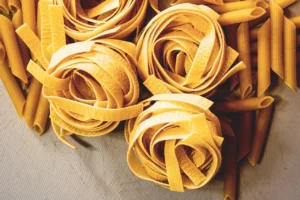
FAQ
Q: Is it the same as tagliatelle?
Not exactly. They’re close in shape, but it is slightly narrower. Still, they can often substitute for each other.
Q: Can I make it at the same time?
Yes. Fresh dough rolls are cut and stored in the freezer for later use. Cook from frozen without thawing.
Q: Does authentic Fettuccine Alfredo use cream?
No. The Roman original used only butter and Parmigiano. Cream was added later in the American adaptation.
Q: How much would I cook per person?
About 3 ounces (85 g) per person for a main course.
Q: What sauces are best with it? Meaty ragùs and mushroom or truffle pairings work beautifully.
Visit https://pastaloverz.com/pasta-tetrazzini-guide/
Conclusion and Call to Action
It is more than Alfredo. It’s a versatile ribbon pasta that adapts to almost any flavor profile — from creamy and meaty to light and luxurious. By mastering cooking techniques and pairing them with the right sauces, you elevate your meals from simple to stunning.
Visit https://pastaloverz.com/pappardelle-guide/
If you enjoyed this guide, explore our other deep dives:
Now it’s your turn. Pick one of the recipes above, cook it tonight, and share your version with us. Pasta is always better when shared.
Visit https://pastaloverz.com/tagliatelle-guide/
